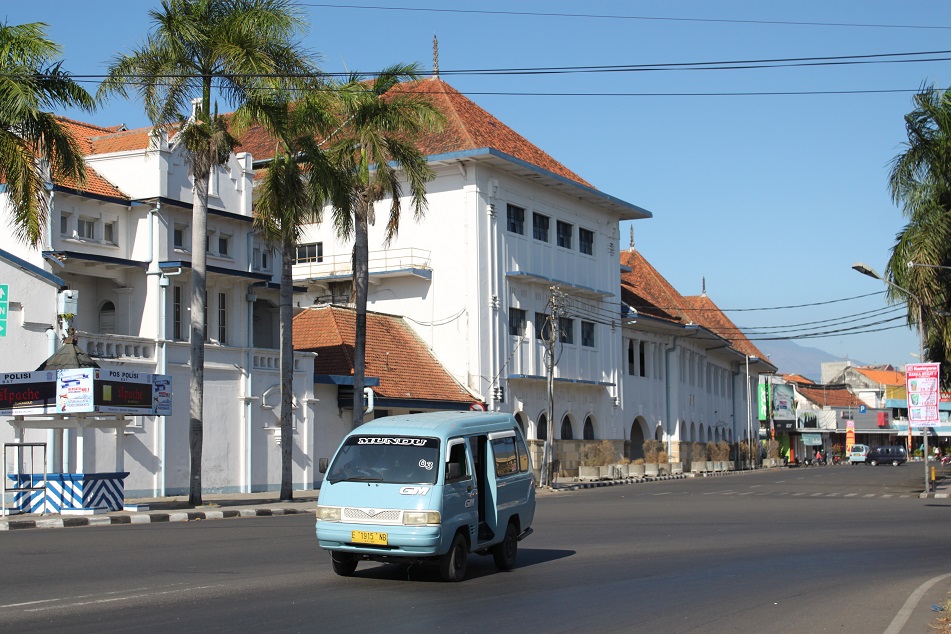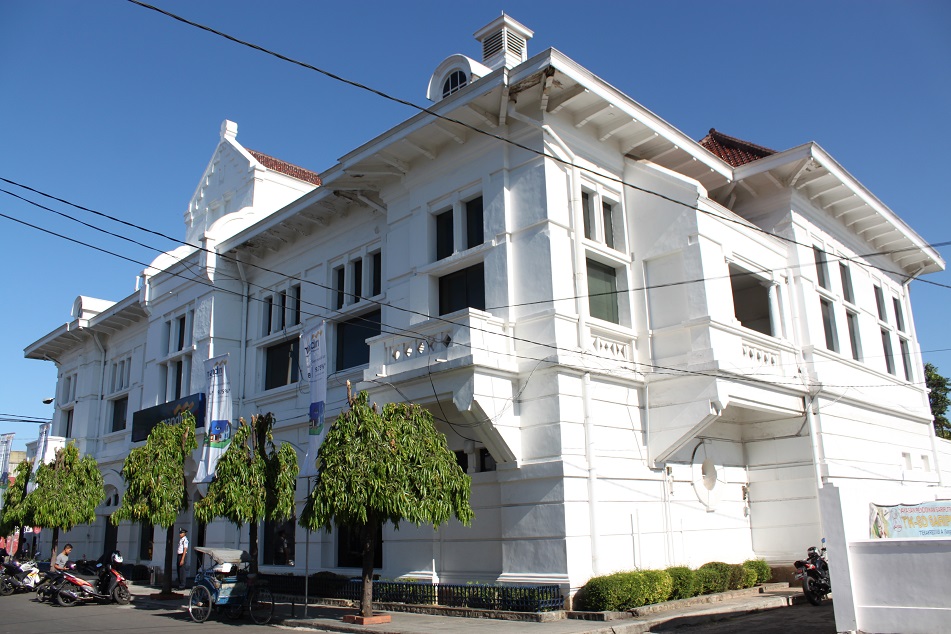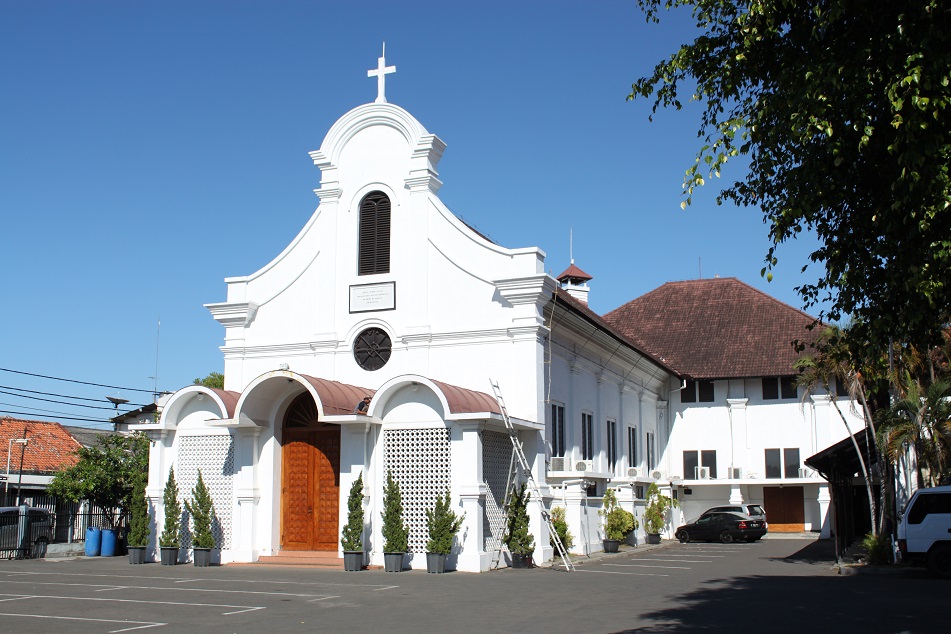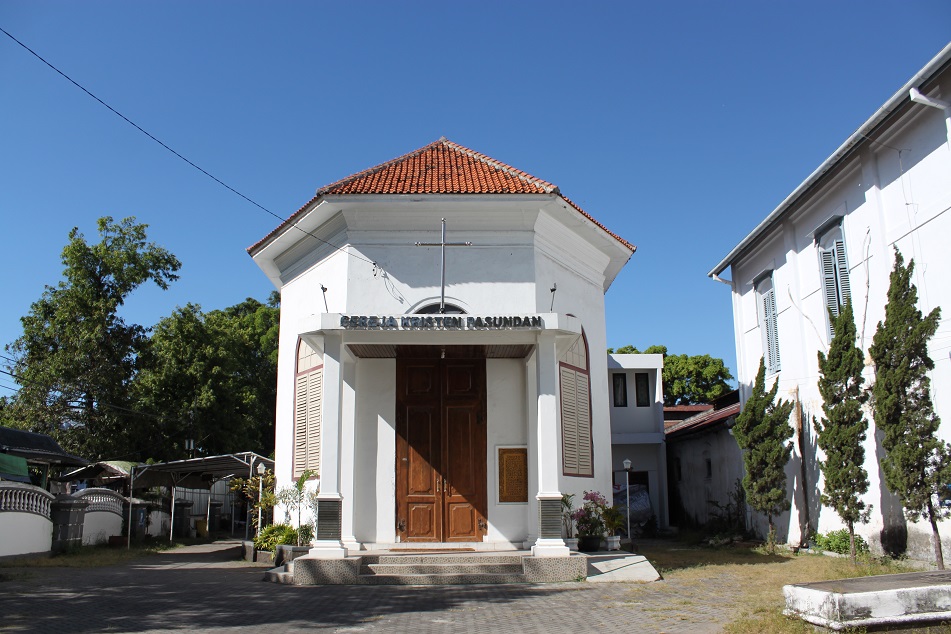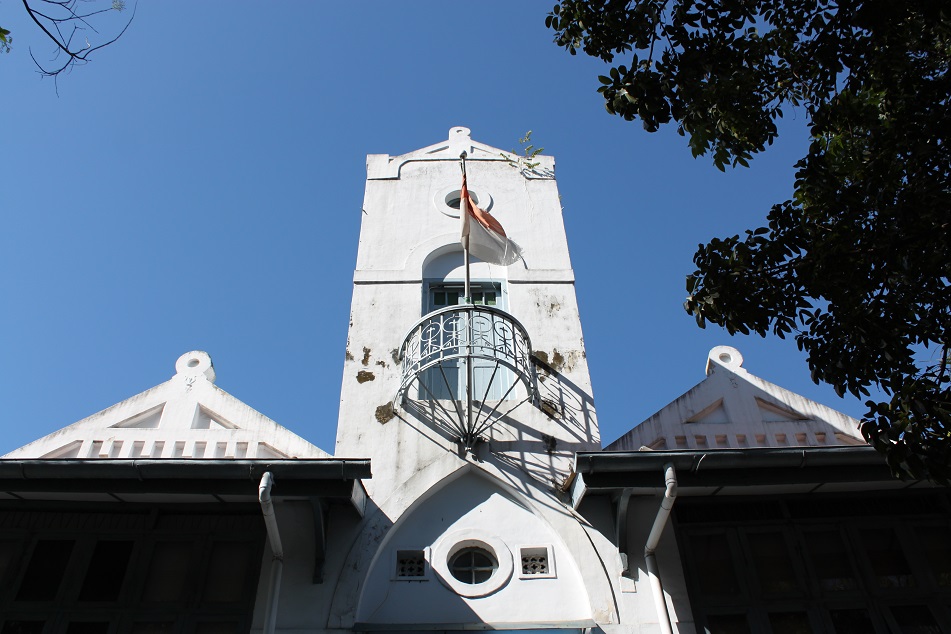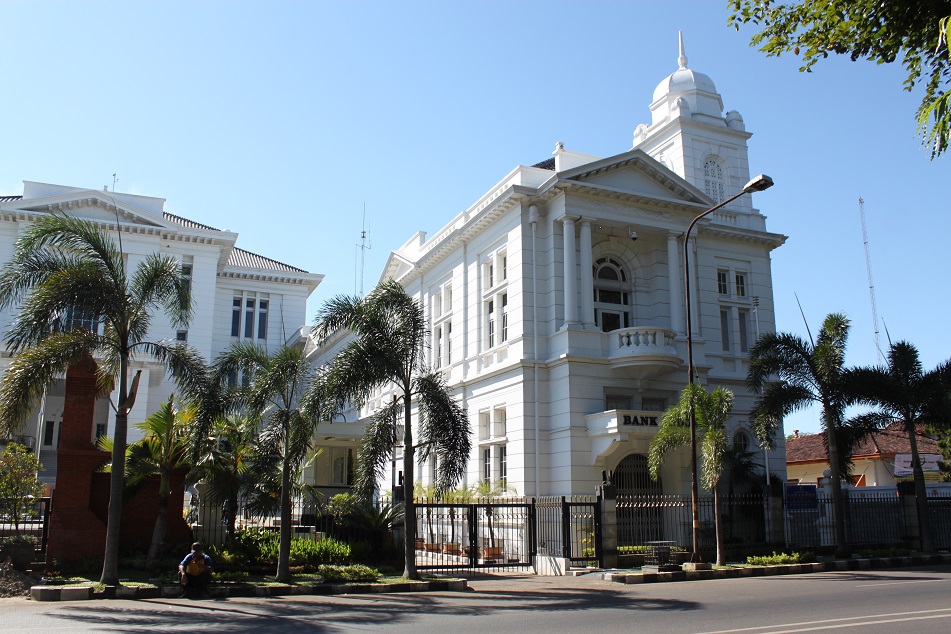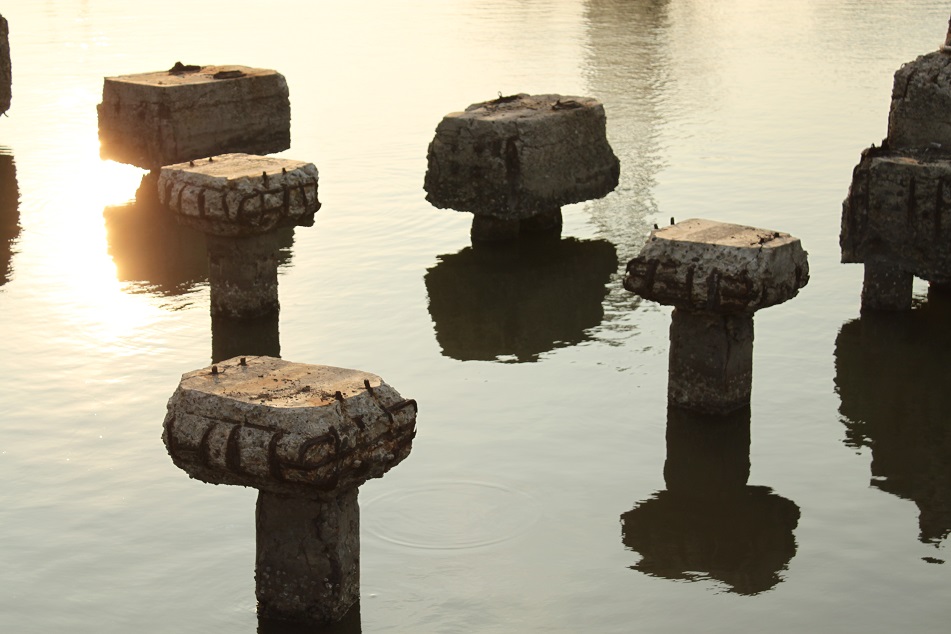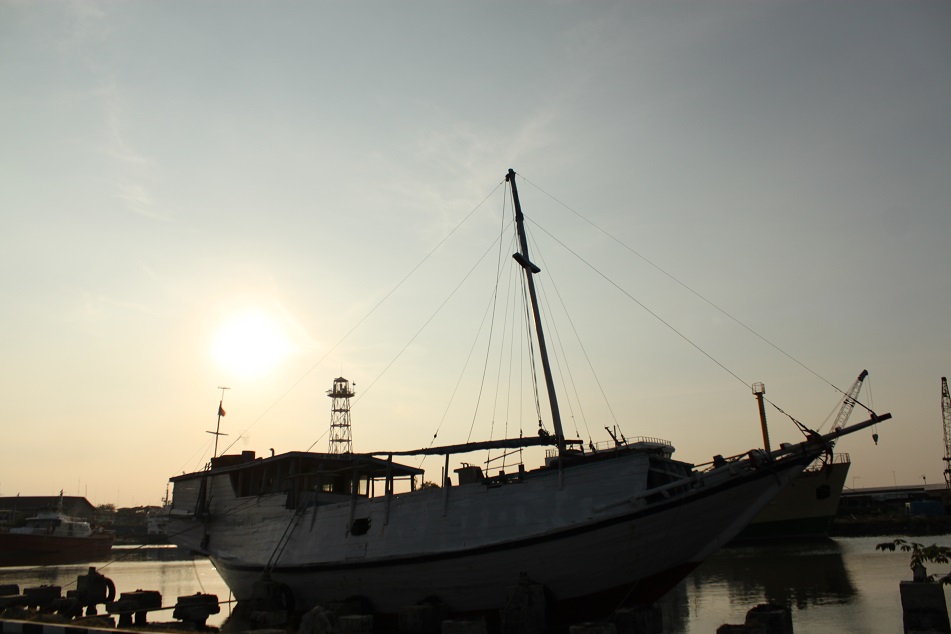Six giant golden shrimps shine brightly under the sun, perched above the half-moon portico of the fine white building. The Indonesian flag flies proudly over a well-manicured garden filled with all sorts of tropical plants. On top of the structure, an emblem also depicting a shrimp seems to further affirm the city’s reputation. Bart, Badai, James and I are standing in front of the City Hall of Cirebon, marveling at this vestige of the Dutch colonial period in the port city. Constructed in the 1920s as the Raadhuis – city council – the Art Deco building also served as a meeting place for Europeans who lived in Cirebon until the Japanese took over and turned it into the city’s seat of administration.
The modern city of Cirebon traces its history back to the 15th century when it was still a small fishing village on the northern coast of Java. However, over the centuries it grew into an important port thanks to its strategic location along a busy maritime trade route in the Indonesian archipelago. Long under the control of the Hindu Galuh kingdom, Cirebon became an independent sultanate in the early 16th century precisely at the time when Islamic polities began to emerge on the northern shore of the island. Two centuries later, amid the increasing Dutch influence in Java, Cirebon became a Dutch protectorate nominally ruled by the sultans, a strategy imposed by the European power to control the island’s economy without completely stripping the local rulers of their power.
In the 19th century, the Dutch implemented cultuurstelsel, ‘cultivation system’, or better known in Indonesia as tanam paksa (forced planting) which required a portion of agricultural production in the Dutch East Indies (today’s Indonesia) to be devoted to export crops. This attracted many Chinese entrepreneurs to the city to reap benefits from the policy. But on the other hand, this policy led to a famine in Cirebon since a big portion of arable land was converted into cash crop plantations. Tobacco was among the major crops to be commercially cultivated in Cirebon, attracting one of the world’s biggest tobacco companies, British American Tobacco (BAT), to invest in the city. After acquiring the factory of a smaller company called S.S. Michael, in 1924 BAT refurbished the building in Art Deco style. Today it stands elegantly in Cirebon’s old town district, home to a number of surviving Dutch colonial monuments.
Other vestiges of the Dutch period in Cirebon are the old churches. Gereja Santo Yusuf (Church of St. Joseph) is a late 19th-century Catholic church which is in fact the oldest church in the western part of Java. Meanwhile, not too far from it the Protestant Gereja Kristen Pasundan (Pasundan Christian Church) occupies a small house built in the late 18th century. Next to the church is the former office of Internationale Crediet & Handelsvereeniging Rotterdam, one of many private-owned banks that thrived in the Dutch East Indies.
During the Dutch colonial administration, Cirebon was a important port from which tobacco, sugarcane and indigo, among other cash crops, were exported. However today the city is more often associated with shrimp thanks to its terasi (shrimp paste, called belacan in Malaysia and Singapore), which is well known among Indonesians for its good quality. The city’s association with shrimp was acknowledged by the Dutch as reflected in the six golden shrimps adorning the city hall. Almost one hundred years after they were mounted, those giant crustaceans are not going anywhere, just like the city’s bright white Dutch buildings which survived the pressures that have demolished many historic vestiges in other cities in the name of development.

